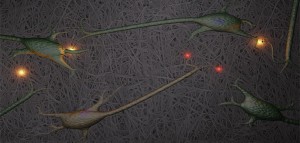Almost doubling in size, from 78 partners to 140 partners, the European Union’s Graphene Flagship is doing nicely. From a June 23, 2014 news item on Nanowerk (Note: A link has been removed),
To coincide with Graphene Week 2014, the Graphene Flagship announced that today one of the largest-ever European research initiatives is doubling in size. 66 new partners are being invited to join the consortium following the results of a €9 million competitive call. [emphasis mine]
While most partners are universities and research institutes, the share of companies, mainly SMEs [small to medium enterprises], involved is increasing. This shows the growing interest of economic actors in graphene. The partnership now includes more than 140 organisations from 23 countries. [emphasis mine] It is fully set to take ‘wonder material’ graphene and related layered materials from academic laboratories to everyday use.
A June 23, 2014 Graphene Flagship news release (also on EurekAlert), which originated the news item, provides more detail about the partners and the call which attracted them,
The 66 new partners come from 19 countries, six of which are new to the consortium: Belarus, Bulgaria, the Czech Republic, Estonia, Hungary and Israel.
With its 16 new partners, Italy now has the highest number of partners in the Graphene Flagship alongside Germany (with 23 each), followed by Spain (18), UK (17) and France (13).
The incoming 66 partners will add new capabilities to the scientific and technological scope of the flagship. Over one third of new partners are companies, mainly SMEs, showing the growing interest of economic actors in graphene. In the initial consortium this ratio was 20%.
Big Interest in Joining the Initiative
The €9 million competitive call of the €54 million ramp-up phase (2014-2015) attracted a total of 218 proposals, representing 738 organisations from 37 countries. The proposals received were evaluated on the basis of their scientific and technological expertise, implementation and impact (further information on the call) and ranked by an international panel of leading experts, mostly eminent professors from all over the world. 21 proposals were selected for funding.
Prof. Jari Kinaret, Professor of Physics at the Chalmers University of Technology, Sweden, and Director of the Graphene Flagship, said: “The response was overwhelming, which is an indicator of the recognition for and trust in the flagship effort throughout Europe. Competition has been extremely tough. I am grateful for the engagement by the applicants and our nearly 60 independent expert reviewers who helped us through this process. I am impressed by the high quality of the proposals we received and looking forward to working with all the new partners to realise the goals of the Graphene Flagship.”
Europe in the Driving Seat
Graphene was made and tested in Europe, leading to the 2010 Nobel Prize in Physics for Andre Geim and Konstantin Novoselov from the University of Manchester.
With the €1 billion Graphene Flagship, Europe will be able to turn cutting-edge scientific research into marketable products. This major initiative places Europe in the driving seat for the global race to develop graphene technologies.
Prof. Andrea Ferrari, Director of the Cambridge Graphene Centre and Chair of the Executive Board of the Graphene Flagship commented today’s announcement on new partners: “This adds strength to our unprecedented effort to take graphene and related materials from the lab to the factory floor, so that the world-leading position of Europe in graphene science can be translated into technology, creating a new graphene-based industry, with benefits for Europe in terms of job creation and competitiveness”.
For anyone unfamiliar with the Graphene Flagship, the news release provides this backgrounder,
The Graphene Flagship @GrapheneCA represents a European investment of €1 billion over the next 10 years. It is part of the Future and Emerging Technologies (FET) Flagships @FETFlagships announced by the European Commission in January 2013 (press release). The goal of the FET Flagships programme is to encourage visionary research with the potential to deliver breakthroughs and major benefits for European society and industry. FET Flagships are highly ambitious initiatives involving close collaboration with national and regional funding agencies, industry and partners from outside the European Union.
Research in the next generation of technologies is key for Europe’s competitiveness. This is why €2.7 billion will be invested in Future and Emerging Technologies (FET) under the new research programme Horizon 2020 #H2020 (2014-2020). This represents a nearly threefold increase in budget compared to the previous research programme, FP7. FET actions are part of the Excellent science pillar of Horizon 2020.
You can find a full press kit for this announcement here, it includes,
- Graphene Flagship Announces Huge New Influx of Partners Through Competitive Call, 23 June, 2014
- Selected Quotes, 23 June, 2014
- List of Consortium and Partners of the Competitive Call, 23 June, 2014
- List of communication contacts of Consortium and new partners.pdf
- New partners of the Graphene Flagship to be revealed on Monday, 23 June, 2014
- …
I have long wondered how Sweden became the lead for the European Union effort. It seemed odd given that much of the initial work was done at the University of Manchester and the UK has not been shy about its ambition to lead the graphene effort internationally.
